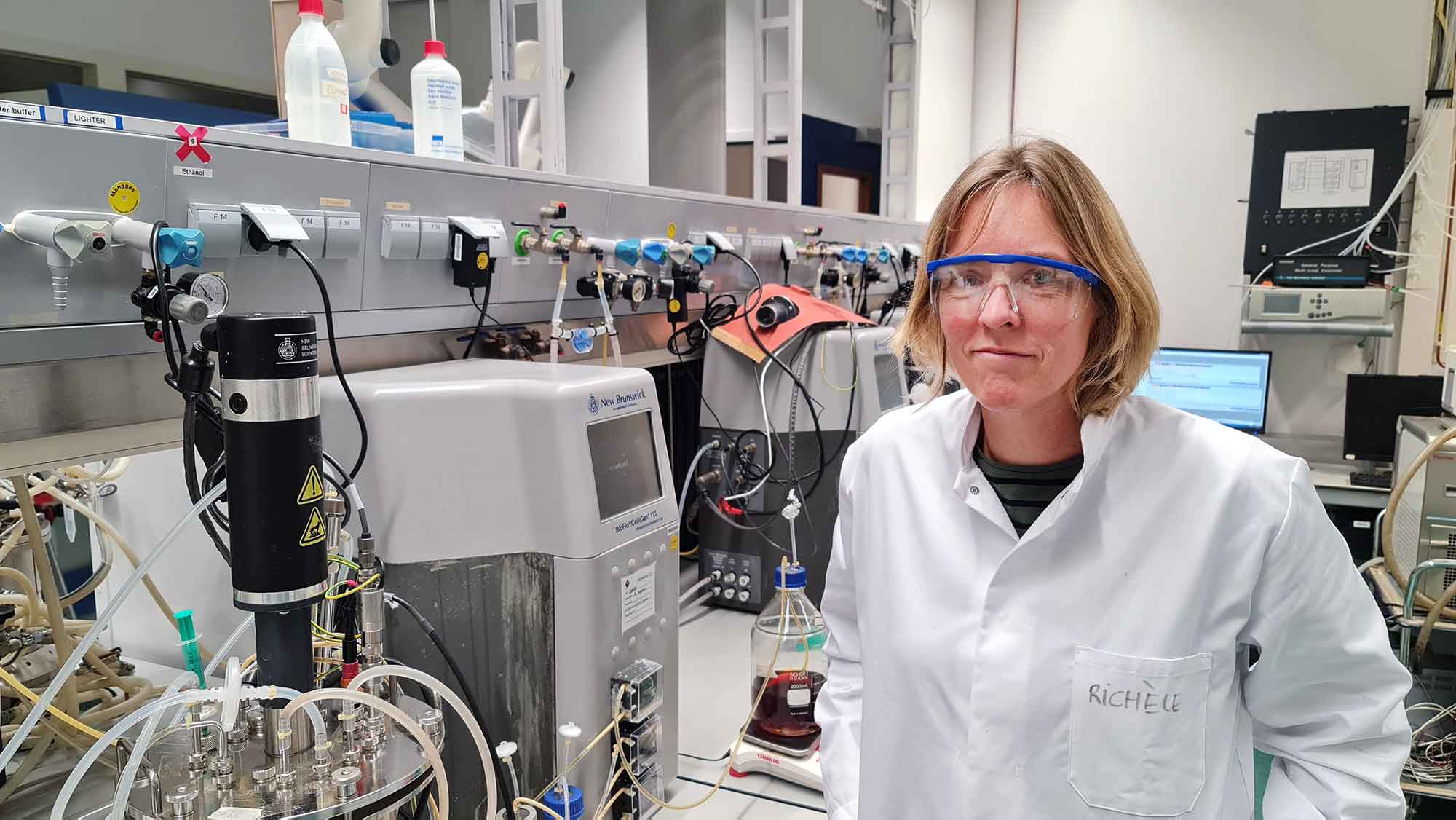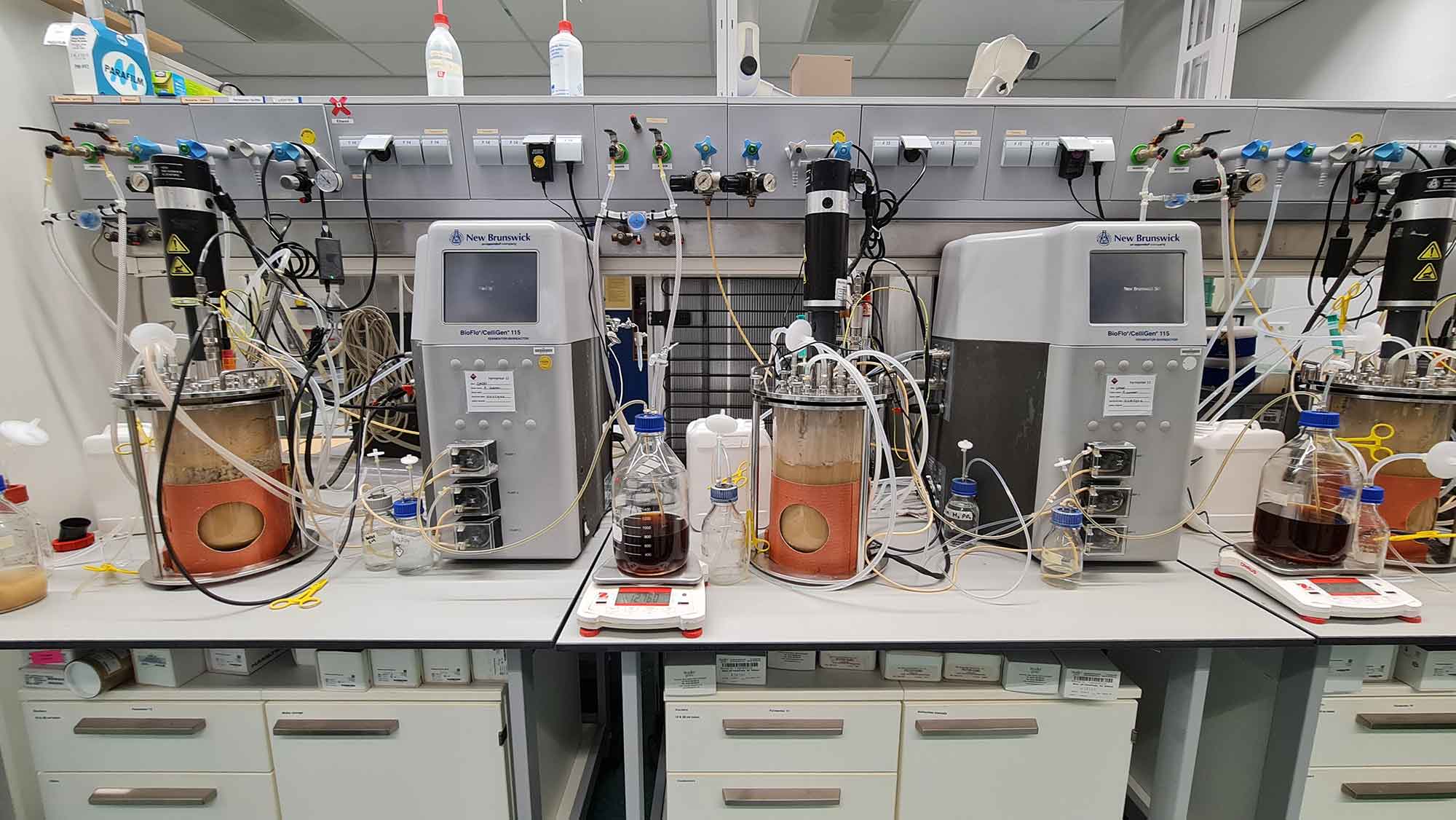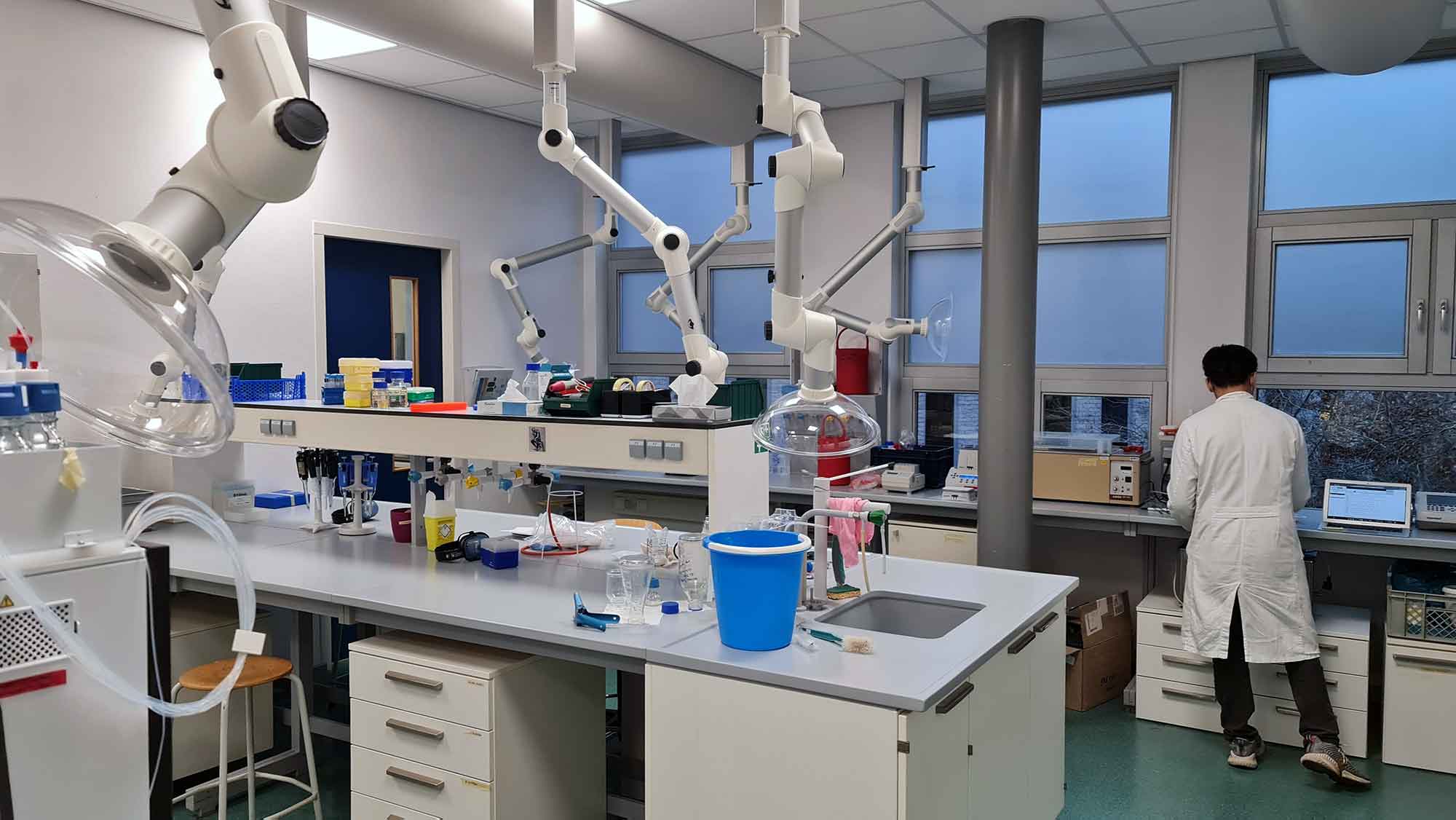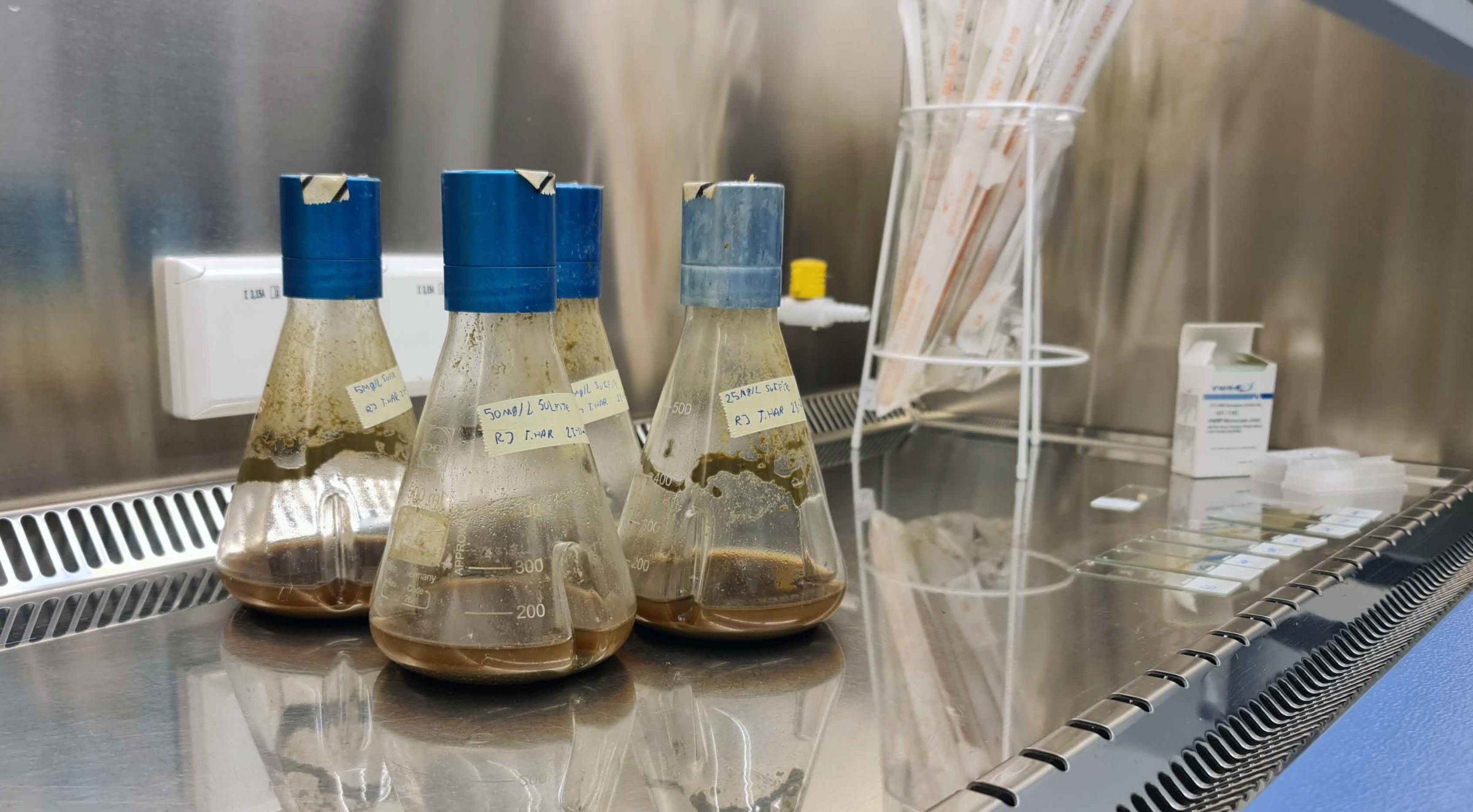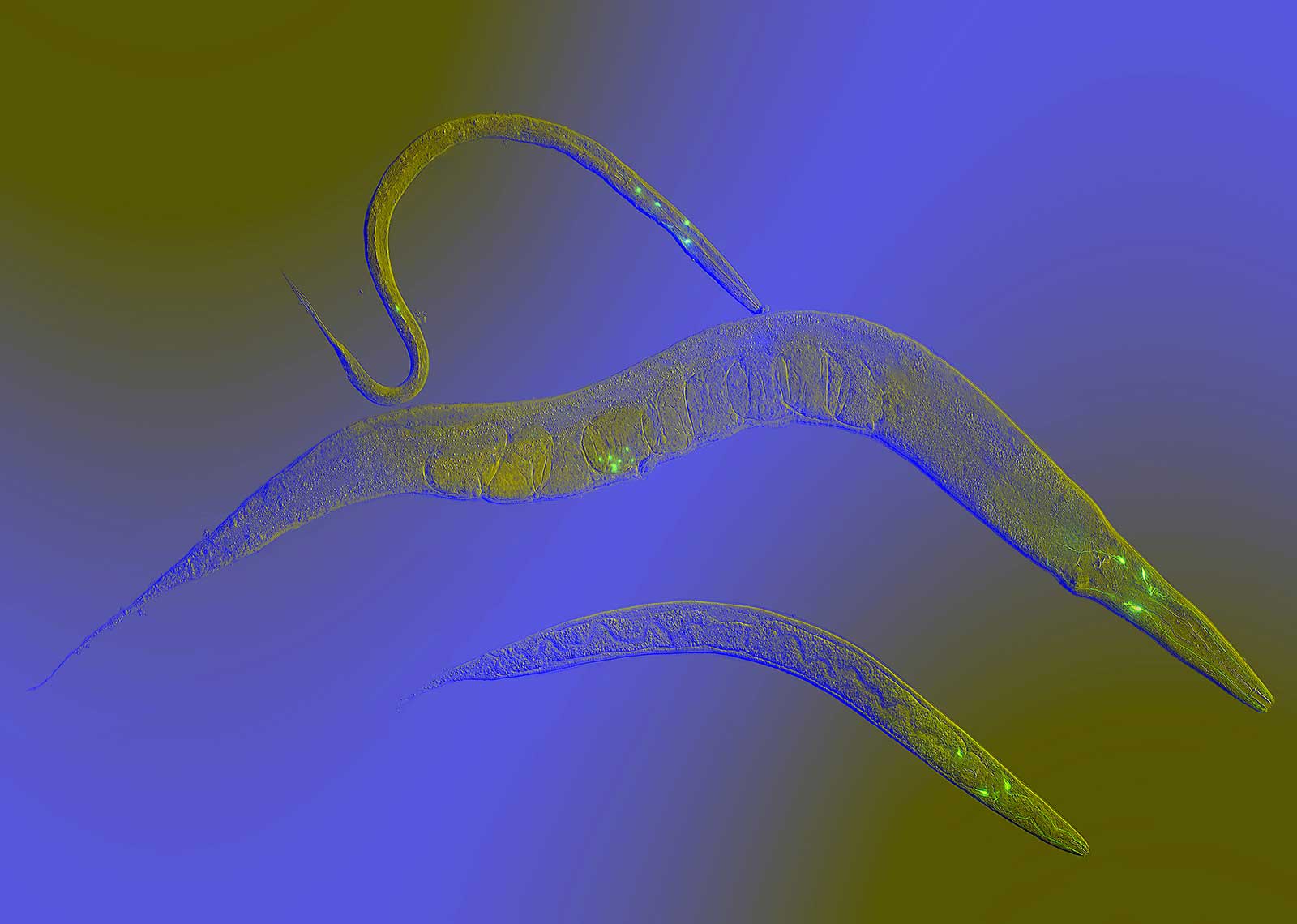In 2006, it started with a modest fermentation lab of the Biodiscovery chair at the initiative of lecturer Christien Lokman (industrial microbiology). The Bioinformatics discipline (associate lecturer Christof Franke) and, more recently, Drug Discovery (lecturer Pedro Hermkens) were added gradually. Currently, a total of 16 people are active in the lab, including support staff and lecturer-researchers. Together with students they work on practice-based research for companies in the field of applied life sciences and chemistry.
Richèle Wind, associate lecturer Biobased Economy and coordinator of the expertise centre, confirms that the synergy between these fields of study is finally coming into its own in the new lab. “Before the renovation, we were housed in three different places spread over two floors. This meant that you had to put on and take off lab coats or protective equipment all the time and sometimes you had to walk along the corridor with chemicals. Very inconvenient. Now it’s all a lot more efficient and safer.”
Worms and plant juices
The lab is peaceful place indeed. Researchers from Drugs Discovery, for example, study under the microscope how tiny Ceaenorhabditis elegans worms react to external stimuli, nutrients and medicines.It is an alternative to animal testing, because although these creatures may be far removed from us both in appearance and emotion, the functioning of worm organs is very similar to that of humans.
One room further on, research is being done on extracting ingredients from biomass, such as roadside grass. Next to it is the fermentation lab that HAN BioCentre once started. Rows of shiny, polished bioreactors stand on long tables, where a whole class of students can learn the tricks of the fermentation trade at the same time. For the bigger tasks, the lab also has larger fermentation vats, up to 80 litres.
In a corner stands an impressive mass spectrometer that can determine the weight of molecules at up to three decimal places. The 500-kilo colossus had to be lifted into the new lab by crane. A present from the nearby Radboud University Medical Centre.
At the fume hood, a researcher is peering at flasks of green sludge. He is looking for useful applications for substances from plant stems, residual waste from tomato cultivation. “We are working together with horticulturalists who want to add value to plant juices,” explains Wind. “The research is confidential, so we cannot say anything about it yet. We first want to share the results with the partners involved.” This often happens in competition-sensitive research projects commissioned by companies. Even the students sign a non-disclosure statement. “Eventually we can publish about it, but usually with a delay.”
Hybrid learning environment
That’s part and parcel of working with businesses. And that is also one of the tasks of the HAN BioCentre, as a Centre of Expertise. “We want to develop a more sustainable relationship with the business community,” says Wind. “We want to grow more by moving closer to the companies, in a hybrid learning environment. That means nearby, but not in a company and not at school either. There, students can work on projects in the triangle (research-education and business, ed.). For Drugs discovery, a lab has just been opened at the Pivot Park in Oss, The Netherlands. And with our biobased lab, we are going to the Connectr building that will be built next year in Arnhem, an initiative of the Province of Gelderland on the sustainable Industry Park Kleefsche Waard (IPKW). Connectr is mainly focused on the energy transition. From a biobased perspective however, we are also bringing in a bit of the raw materials transition. We hope that this will generate synergy.”
After all, several specialisms come together in the biobased economy. That is also the reason why the HAN – University of Applied Sciences has set up a multidisciplinary minor in which students of Construction Engineering and Industrial Design are introduced to biobased materials. “Take building with mycelium. There is a biological side to letting fungi grow, but the material properties must also meet certain requirements in order to be able to design and build with it. I see that students of construction engineering enjoy hearing about biology and vice versa. They stimulate each other. This provides new insights and prepares students for the labour market, where there is a great need for people who are able to communicate with multiple disciplines.”
This article was produced in collaboration with HAN BioCentre.
